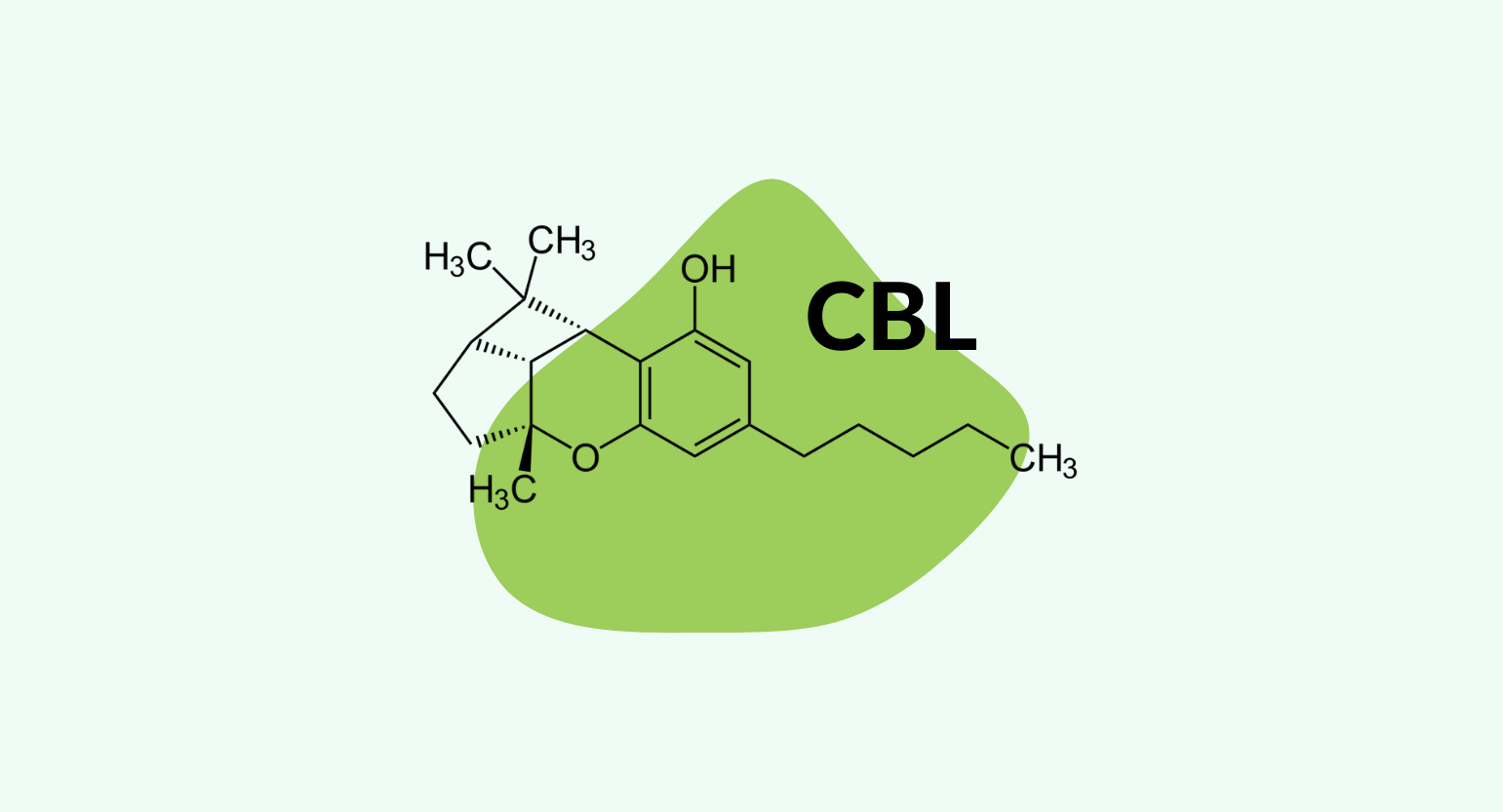
Evidence based
What is CBL (Cannabicyclol)?
CBL is massively understudied. Here’s what we know so far.
CBL (cannabicyclol) is a cannabinoid that’s found in low percentages in hemp and marijuana.
This cannabinoid is massively understudied, and information surrounding its nature is extremely limited. However, we do have some information about CBL and what benefits it has to offer.
We’ve sifted through all the available information on this cannabinoid to fill you in on what we know about it so far.
What is CBL (Cannabicyclol)?
Cannabicyclol (AKA CBL) is a minor cannabinoid produced in both hemp and marijuana.
This cannabinoid was first discovered in 1964 by F Korte and H Sieper. Originally these two German Chemists thought the cannabinoid resembled THC and named it “THC 3.”
Later, in 1967, the cannabinoid was isolated where a molecular structure dissimilar to THC was discovered — however, it still wasn’t clear exactly what the structure looked like. The cannabinoid was then renamed cannabicyclol (CBL).
Jumping forward in time to 1971, the correct structure of CBL was finally discovered.
CBL is not produced by the cannabis plant. Instead, it’s a byproduct that forms as another cannabinoid, called CBC (cannabichromene), breaks down. When CBC is exposed to UV light, it’s gradually converted into CBL.
Therefore, cannabis strains high in CBC also tend to have the highest percentage of CBL.
This leads us to our next point. In 2008, a container of 2,700-year-old cannabis was found in a tomb in China [1]. Upon analysis, it was discovered that this cannabis contained high quantities of both CBC and CBL. The age of the sample is thought to be the main reason why CBL concentrations were so high. Fresh cannabis rarely contains CBL in concentrations above a few hundredths of a percent.
CBL has also been recorded in higher concentrations in hashish [2]. This could be down to the long shelf-life of hash and the typically long period in which it’s stored after manufacture and during transportation.
Unfortunately, this is all the reliable information we have on CBL at this time.
Key Take-Aways: CBL
- CBL is a non-psychoactive cannabinoid
- CBL occurs in very low concentrations in hemp & marijuana
- There’s very little research available on this cannabinoid
- CBL is difficult to extract
- CBL levels increase in cannabis after long periods of storage
What Are The Potential Benefits of CBL?
Unfortunately, there’s currently no pharmacological research or studies that look into the effects of CBL on the body. It’s extremely difficult to isolate and extract this cannabinoid due to its low percentage within hemp and cannabis. This makes it complicated for scientists to research in any real detail.
With that said, CBL is thought to exert therapeutic effects through the endocannabinoid system (ECS). The ECS is a network of receptors and hormone-like neurotransmitters tasked with regulating homeostasis throughout the body. All organisms on Earth with a central nervous system have an ECS.
Although there isn’t any valuable pharmacological research surrounding CBL, it may well contribute to the entourage effect [3]. The entourage effect is a mechanism that’s been thoroughly researched. It has been discovered that cannabinoids work symbiotically to produce effects that singular cannabinoids alone wouldn’t produce.
Where To Buy CBL Products
Due to difficulties around isolating and extracting CBL from cannabis, there are currently no specific CBL products on the market.
However, you will find CBL in low concentrations in hemp flower, cannabis concentrates, full-spectrum CBD oils, and other CBD products.
We hope to see more research into CBL, improved extraction techniques, and new products featuring this cannabinoid in the future.
For now, if you’re looking to supplement with cannabicyclol, your best opportunity is to use a full-spectrum CBD extract that includes a rich cannabinoid profile.
Is CBL Legal?
CBL is federally legal, thanks to the 2018 Farm Bill. This bill makes it legal to distribute and consume hemp products legally as long as they contain no more than 0.3% THC.
All cannabinoids extracted from hemp, except THC in high percentages, are federally legal and can be consumed country-wide, providing that the state you live in hasn’t developed legislation to ban specific cannabinoids.
CBL is a non-intoxicating cannabinoid, and as far as we know, there’s currently no state that bans its use. However, you’ll struggle to find CBL isolates and extracts due to the extraction difficulties associated with them.
Bottom Line: What’s the Future of CBL?
The future of CBL is unclear, but we can hope that further research into this cannabinoid will improve our knowledge about its nature and effects.
Studies surrounding cannabinoids and cannabis as a whole are increasing year on year.
Research continues to emerge with valuable information on how cannabinoids interact with the ECS and how they may be beneficial to our health.
With increased research into the plant, we can expect that more information will arise on cannabicyclol and its features. Once we understand why this cannabinoid is produced and how we can extract it more effectively, we should see some pharmacological studies that look into its potential benefits.
For now, our knowledge surrounding CBL is extremely limited. We can only speculate what the potential benefits and risks of the cannabinoid may be. Keep an eye on this space for updated information on CBL as it arises.
References
- Russo, E. B., Jiang, H. E., Li, X., Sutton, A., Carboni, A., Del Bianco, F., … & Li, C. S. (2008). Phytochemical and genetic analyses of ancient cannabis from Central Asia. Journal of experimental botany, 59(15), 4171-4182.
- Mechoulam, R., Shani, A., Edery, H., & Grunfeld, Y. (1970). Chemical basis of hashish activity. Science, 169(3945), 611-612.
- Russo, E. B. (2019). The case for the entourage effect and conventional breeding of clinical cannabis: no “strain,” no gain. Frontiers in plant science, 9, 1969.